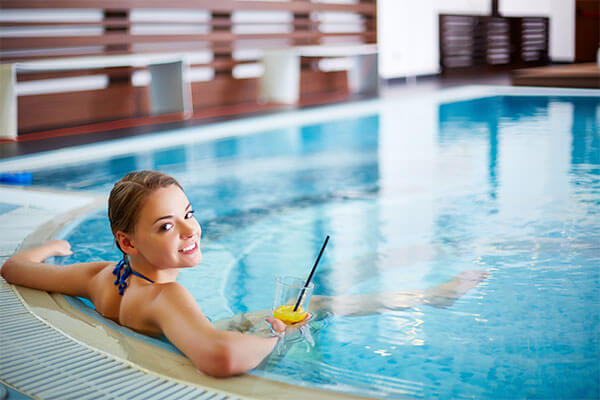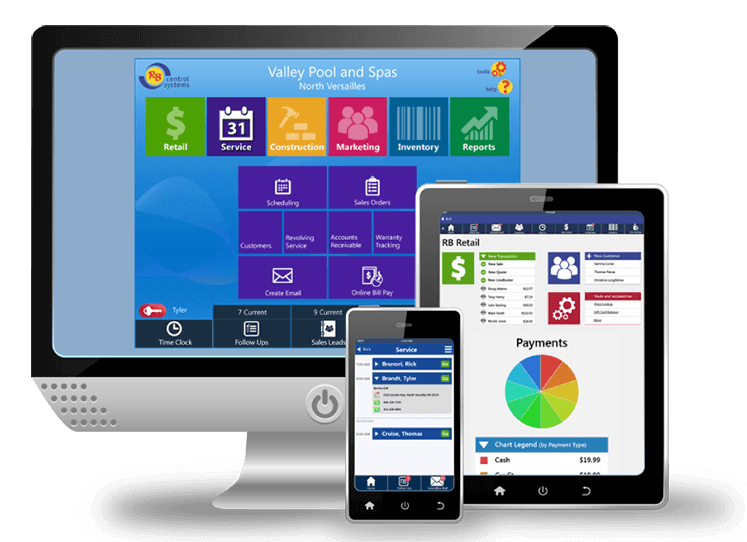11 Ways Your Customers Can Enjoy a More Sustainable Swimming Pool
Pools aren’t known for being especially eco-friendly — they use energy and strong chemicals to heat and circulate large amounts of water. However, there are more and more highly accessible, easy, and affordable ways your customers can have more sustainable swimming pools. These methods don’t require your customers to give up on having a sparkling clean and clear pool, either — they simply optimize the resources used to maintain that perfect pool so nothing goes to waste.
We’ve put together a list of 11 tips you can share with your customers to show them how they can maintain the pool of their dreams while protecting the environment. These tips are arranged starting with those requiring the least amount of effort and to those that require the most investment and time.
1. Use LED Lighting
This likely comes as no surprise — LED light bulbs are unquestionably the most efficient, using 75% less energy than incandescent bulbs and lasting 25 times longer. Switching to LED for all of your sustainable swimming pool lighting is the fastest, easiest, and cheapest way to significantly reduce the amount of energy used and lower your overall energy bills.
2. Cover the Pool
Pool covers are another simple and cheap way to conserve both water and energy. A cover helps to prevent heat loss by insulating the water, keeps debris and dust out of the pool, and cuts down on water evaporation so you can refill the pool less frequently. A solar cover is the best option — it not only insulates the water from heat loss, it also traps warmth from the sun to be absorbed into the water.
3. Use a Robotic Pool Cleaner
Robotic pool cleaners are one of the easiest robotic technologies available — most are ready to use right out of the box and require nothing more than plugging in or charging before use. They can reduce the amount of chemical cleaners needed and extend the life of your filters. They are more efficient than a standard pool filtration system alone, and often cost less than five cents an hour to run. A solar cleaners can conserve even more energy for an even more sustainable swimming pool.
4. Keep Your Filters Clean
A dirty filter forces circulation pumps to work harder and more often and reduces the effectiveness of your cleaning chemicals. To get the most out of your filters, backwash sand and dichotomous earth (DE) filters once a month or any time the pressure rises 8-10 PSI above the average. Remove and clean the filter once a year, occasionally replacing the materials. You may want to consider a cartridge filter, which requires less water to keep clean and is easier to replace. The cleaning process for cartridge filters is more cumbersome, but you don’t have to do it as often.
5. Choose a Chlorine Alternative
Chlorine is excellent for keeping a pool sparkling clean, especially when it comes to protecting against algae. However, it can be harsh and, if not handled properly, can cause serious injury or illness. Considered a pesticide by the EPA, chlorine is not plant or animal-safe. Alternatives include bromine, polyhexamethylene giguanide (PHMB), ozonator systems, or natural mineral sanitizers.
You may have to continue using chlorine because it’s the primary protector against algae, but you can combine it with bromine so you don’t have to use as much or add it as often.

6. Switch to a Solar Heater
Heaters make it possible to get more use out of your pool during chillier months, and in some climates allow you to use your pool year-round so you don’t have to drain it each fall, conserving that water. Solar heaters use tubes to absorb heat from the sun to warm the water after it goes through filtration, taking your pool’s eco-friendliness a step further to use less energy than a traditional heater. They usually require a larger up-front investment, but save you so much on energy bills that they usually pay for themselves in as little as a year and a half.
7. Install a Heat Pump
A heat pump is a great option for those in warm climates where a heater isn’t as necessary. Heat pumps are usually electric but they consume a much smaller amount of energy. This is because a heat pump draws heat from the air and transfers it into the water instead of generating its own heat. Keep in mind that these pumps require proper maintenance and optimal placement for air flow.
8. Optimize Your Circulation Pumps
One way to optimize your circulation pumps is to add a timer. Most pumps run more than they need to, wasting energy and costing unnecessary money. Energy.gov recommends that these pumps run only for 6 hours a day — as long as your pump is properly sized to your pool’s volume, this should be plenty (if your pump is larger than necessary, you can try running it for an hour or two less, and vice versa.) Turning the pump on and off each day can be a hassle though — adding an automatic timer to your pump can help you reduce energy consumption without sacrificing convenience.
You can also switch to a dual-speed or variable-speed circulation pump, which automatically changes speeds to reduce energy costs.
9. Create a Windbreak
A windbreak can be just about anything you choose — some people plant tall hedges, or build large lattice structures and even fences around their pools. The purpose is to reduce wind shear to reduce the amount of water evaporation, as well as the amount of debris and dust that gets blown into the pool. The greenest option is to plant your own using local foliage.
10. Install an Enclosure
An enclosure is the most comfortable and private option, providing shade and seclusion while keeping the pool cleaner and warmer and reducing evaporation — so you can clean, heat, and fill the pool less frequently. This option extends the use you get out of your pool, potentially making it swimmable year-round.

11. Build a 100% Natural Pool
A completely chemical-free sustainable swimming pool is an option that became popular in Europe first before making its way across the pond. Natural pools use ‘regeneration zones’ where plants, rocks, and gravel filter the pool water and boost oxygen levels.
Moss filter systems are fairly new — they use sphagnum moss to inhibit “the formation of bacterial colonies called biofilms.” Because biofilms tend to absorb chlorine, they build up greater resistance to it and require higher doses to keep the pool clean. A moss filter in a natural pool can reduce the chlorine demand and create less work for you — all you have to worry about is skimming the pool and tending the plants. These pools are also cleaner than you might expect — while they may not have the intense blue color that chemicals often create, they are still as clean and clear as your average pool. Natural pools are typically a larger up-front investment, but they ultimately save money on chemicals and energy.
Boost Your Customer Relationship Management Strategy Today with RB Software
RB’s CRM software can help you share resources like this with your customers, as well as identify those who might be interested in implementing some of these tips. For example, if you know a customer purchased a heat pump from you, you may be able to interest them in a timer to minimize their energy costs. Our software offers these capabilities and much more — everything you need to not only support but boost your customer relationship management strategy.





